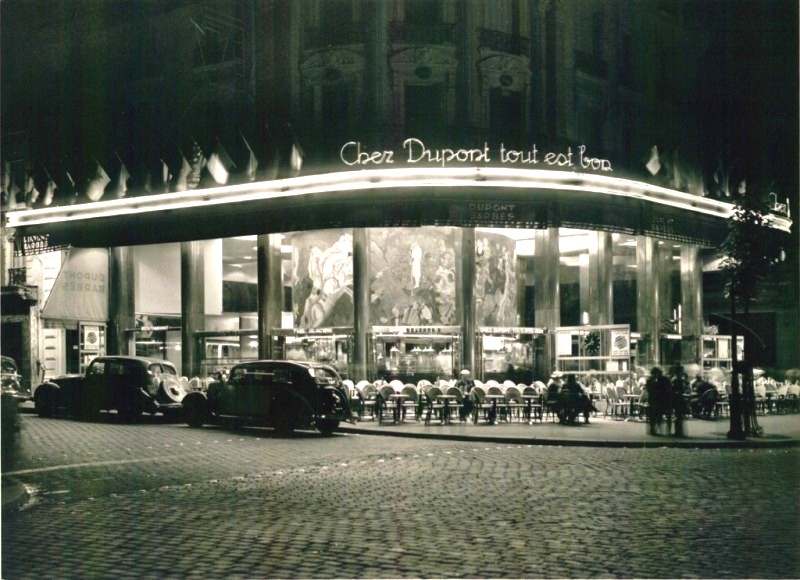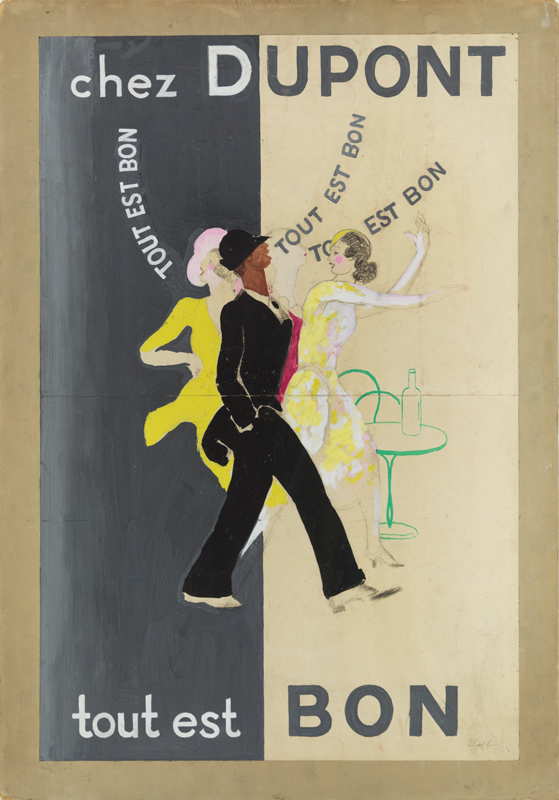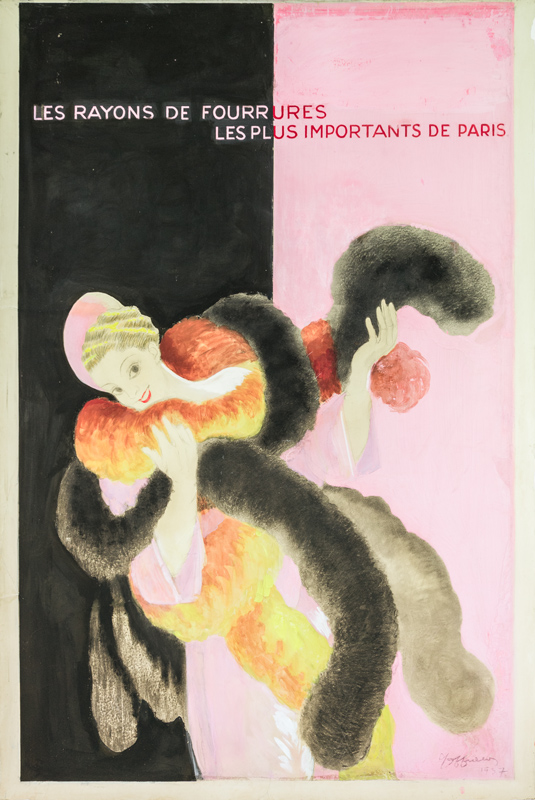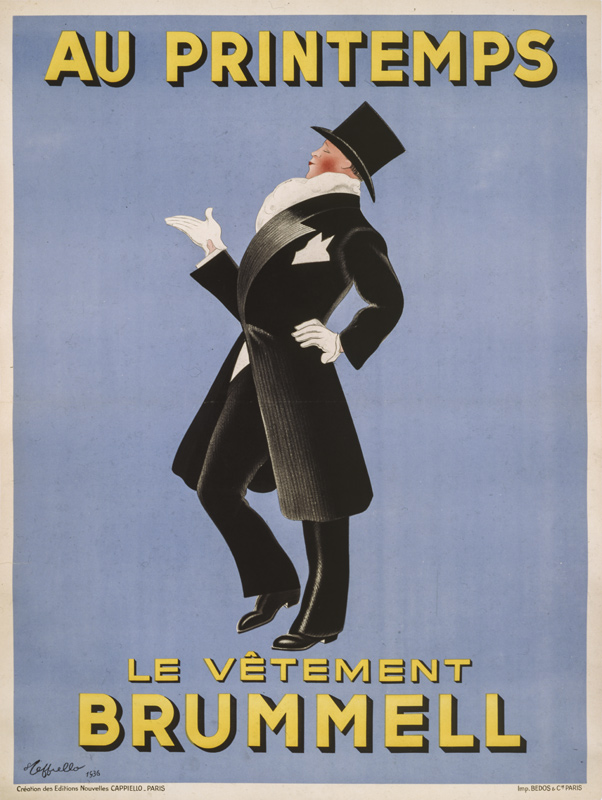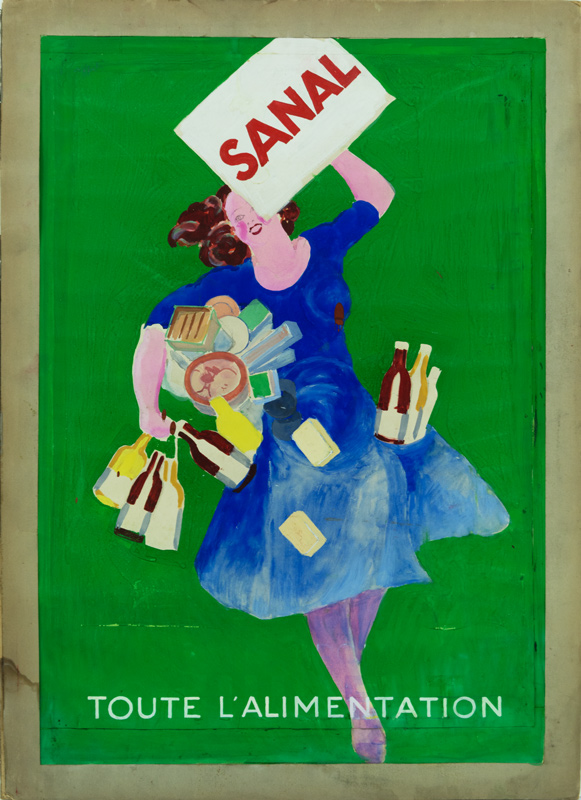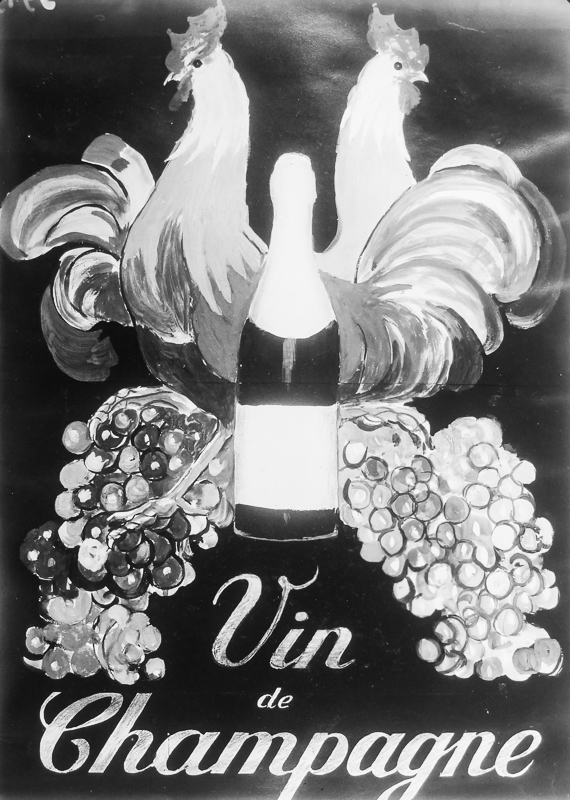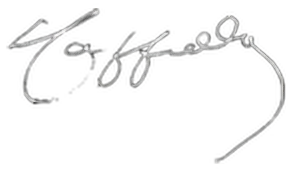Chez Dupont
ID(s):
1933042M0
1933042M0
Subject
Chain of Parisian brasseries.
"The Dupont café-brasserie chain was founded in 1887 by Louis-Emile Dupont, two years after he purchased his first Parisian café. In 1909, he took over the café from Maison Pierre Crouzet, at the corner of Barbès and Rochechouart boulevards, to open Café Dupont.
...Originally, it was a large, charmless bistro.
Louis-Emile handed it over to his son, Émile-Louis, in 1919.
...The young owner was ambitious—he wanted nothing less than to reinvent the Parisian café. Monsieur Emile, as his employees called him, sought to do away with the dark and unwelcoming neighborhood bistro. His idea was to open up cafés, turning them into full-fledged living spaces. He wanted them well-lit and richly decorated—places where people enjoyed gathering to socialize. All this with quality products at affordable prices and, above all, impeccable service.
...The success of the chic yet popular brasserie was meteoric: Dupont-Montmartre (1923), Dupont-Clichy (1924), Dupont-Moka at Place des Ternes (1925), Dupont-Métropole on the Grands Boulevards, and even a brasserie on the Champs Elysées, Le Berry, followed by Dupont-Cambronne, Dupont-Latin (1934), Bastille, Le Cyrano in Pigalle…
...The barman-restaurateur, as he defined himself, had a sharp sense for business and public appeal. His taste for advertising and keen observation of society made him the inventor of the modern brasserie. With the era of dingy drinking holes behind him, the new brasserie—where people gathered as in a salon—needed more than just a name, something less common than "Dupont." In the age of bold advertisements plastered across Parisian walls, the brasserie sought a slogan to stand out… and so it became: “At Dupont, everything is good.”
...In 1935, Emile Dupont undertook the renovation of Dupont Barbès. He immediately imposed his concept: welcoming early-morning service at low prices in a luxurious setting. Customers were greeted by various signs meticulously placed throughout the dining area and counter: “always ready at the lowest price,” “Sit down, relax, you’re at home!,” “Customers, my friends, welcome—and don’t forget, at Dupont, everything is good!” With inviting decor, illuminated signs, and a massive fresco running along a grand metal bar—all visible from outside—the effect was guaranteed, making it hard for passersby to resist.
...The counter at Dupont-Barbès was enormous, stretching the length of the brasserie’s storefront, topped by a grand 22-meter fresco by master artist Leonetto Cappiello, known for works like the Bouillon Kub posters and “I only smoke Nil.” “This brightly lit fresco was meant to be visible from outside through a vast glass window. It wasn’t so much for the bar’s patrons as for the passersby on the street. It was meant to be a call,” explained designer Jacques Viénot in his biography of the artist. The fresco depicts a festive Montmartre, showcasing its diversity, along which a merry crowd dances joyfully. It begins with performers from the dazzling Cirque Médrano—clowns, trapeze artists, two rearing horses and their tamer—then continues along the boulevard where Black and White jazz musicians play energetically. Behind them, two figures embrace in a grove, sheltered from the urban bustle. The party is in full swing, featuring a bouncing Taras Bulba, guests in embroidered Chinese jackets, smiling waiters, chefs in toques, and a whirl of women in summer dresses and bobbed haircuts. The iconic French Cancan dancers close out this magnificent decorative ribbon in warm tones. Surrounding it, the many mirrors of Brasserie Dupont redefine perspective to reimagine the notion of space. The dining area is tiered to broaden the field of vision—a café with a panoramic view… much like the nearby Louxor, a mighty ship ready to part the crowd, cascading balconies overlooking a grand screen. Thus, Barbès unfolds, between fiction and reality, around two projection spaces." (excerpt from BARBÈS CAFÉS. BEFORE TATI, DUPONT BARBÈS 2/2 By Laurent Laborie – May 12, 2015)
In 1961, Dupont Barbès was demolished and replaced by Tati stores. The fresco was removed and stored away.
See a black-and-white nighttime photo of Dupont Barbès (© Paris Archives _ 11Fi 4767).
Chain of Parisian brasseries.
"The Dupont café-brasserie chain was founded in 1887 by Louis-Emile Dupont, two years after he purchased his first Parisian café. In 1909, he took over the café from Maison Pierre Crouzet, at the corner of Barbès and Rochechouart boulevards, to open Café Dupont.
...Originally, it was a large, charmless bistro.
Louis-Emile handed it over to his son, Émile-Louis, in 1919.
...The young owner was ambitious—he wanted nothing less than to reinvent the Parisian café. Monsieur Emile, as his employees called him, sought to do away with the dark and unwelcoming neighborhood bistro. His idea was to open up cafés, turning them into full-fledged living spaces. He wanted them well-lit and richly decorated—places where people enjoyed gathering to socialize. All this with quality products at affordable prices and, above all, impeccable service.
...The success of the chic yet popular brasserie was meteoric: Dupont-Montmartre (1923), Dupont-Clichy (1924), Dupont-Moka at Place des Ternes (1925), Dupont-Métropole on the Grands Boulevards, and even a brasserie on the Champs Elysées, Le Berry, followed by Dupont-Cambronne, Dupont-Latin (1934), Bastille, Le Cyrano in Pigalle…
...The barman-restaurateur, as he defined himself, had a sharp sense for business and public appeal. His taste for advertising and keen observation of society made him the inventor of the modern brasserie. With the era of dingy drinking holes behind him, the new brasserie—where people gathered as in a salon—needed more than just a name, something less common than "Dupont." In the age of bold advertisements plastered across Parisian walls, the brasserie sought a slogan to stand out… and so it became: “At Dupont, everything is good.”
...In 1935, Emile Dupont undertook the renovation of Dupont Barbès. He immediately imposed his concept: welcoming early-morning service at low prices in a luxurious setting. Customers were greeted by various signs meticulously placed throughout the dining area and counter: “always ready at the lowest price,” “Sit down, relax, you’re at home!,” “Customers, my friends, welcome—and don’t forget, at Dupont, everything is good!” With inviting decor, illuminated signs, and a massive fresco running along a grand metal bar—all visible from outside—the effect was guaranteed, making it hard for passersby to resist.
...The counter at Dupont-Barbès was enormous, stretching the length of the brasserie’s storefront, topped by a grand 22-meter fresco by master artist Leonetto Cappiello, known for works like the Bouillon Kub posters and “I only smoke Nil.” “This brightly lit fresco was meant to be visible from outside through a vast glass window. It wasn’t so much for the bar’s patrons as for the passersby on the street. It was meant to be a call,” explained designer Jacques Viénot in his biography of the artist. The fresco depicts a festive Montmartre, showcasing its diversity, along which a merry crowd dances joyfully. It begins with performers from the dazzling Cirque Médrano—clowns, trapeze artists, two rearing horses and their tamer—then continues along the boulevard where Black and White jazz musicians play energetically. Behind them, two figures embrace in a grove, sheltered from the urban bustle. The party is in full swing, featuring a bouncing Taras Bulba, guests in embroidered Chinese jackets, smiling waiters, chefs in toques, and a whirl of women in summer dresses and bobbed haircuts. The iconic French Cancan dancers close out this magnificent decorative ribbon in warm tones. Surrounding it, the many mirrors of Brasserie Dupont redefine perspective to reimagine the notion of space. The dining area is tiered to broaden the field of vision—a café with a panoramic view… much like the nearby Louxor, a mighty ship ready to part the crowd, cascading balconies overlooking a grand screen. Thus, Barbès unfolds, between fiction and reality, around two projection spaces." (excerpt from BARBÈS CAFÉS. BEFORE TATI, DUPONT BARBÈS 2/2 By Laurent Laborie – May 12, 2015)
In 1961, Dupont Barbès was demolished and replaced by Tati stores. The fresco was removed and stored away.
See a black-and-white nighttime photo of Dupont Barbès (© Paris Archives _ 11Fi 4767).
Description:
A man and three women hurry with confident steps to go to Dupont's. They proclaim around them to those who can hear them that at Dupont's "everything is good".
A man and three women hurry with confident steps to go to Dupont's. They proclaim around them to those who can hear them that at Dupont's "everything is good".
Source:
1933042M0: Musée des Beaux-Arts, Lyon
Image © Lyon MBA - Photo Alain Basset
Photo of the Dupont Barbès brewery (©Archives de Paris _ 11Fi 4767)
1933042M0: Musée des Beaux-Arts, Lyon
Image © Lyon MBA - Photo Alain Basset
Photo of the Dupont Barbès brewery (©Archives de Paris _ 11Fi 4767)
Date:
1933
1933
Language: French
Dimensions of the drawing (cm):
195 x 130
195 x 130
Signature:
Unsigned
Unsigned
Materials:
Black stone or charcoal, gouache
Black stone or charcoal, gouache
Support:
Paper
Paper
Reference Devambez: 6019
| Content type | |
|---|---|
| Period |

